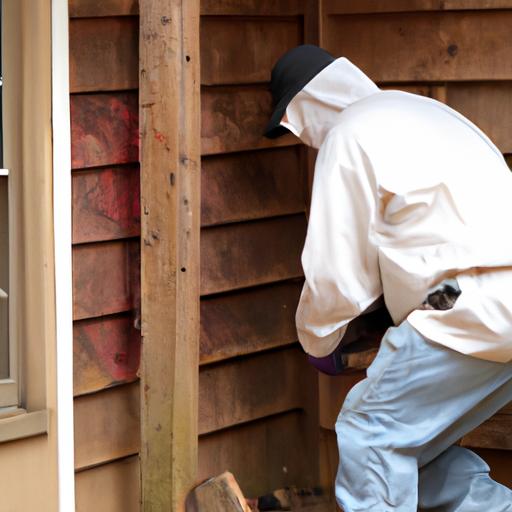Introduction
When it comes to maintaining the integrity of your home, one silent invader can wreak havoc without you even knowing it – termites. These tiny pests may seem harmless at first glance, but the damage they can inflict on homes and buildings is nothing short of catastrophic. From weakening wooden structures to causing extensive financial burdens, termites are a force to be reckoned with.
Imagine waking up one day to find that the wooden beams supporting your home have been hollowed out by these insidious insects. The very foundation of your sanctuary compromised, all because of a termite infestation that went unnoticed until it was too late. This scenario may seem like a nightmare, but for many homeowners, it’s a harsh reality. That’s why understanding the importance of pest control for termites is crucial in safeguarding your most valuable asset – your home. Let’s delve deeper into the world of termite control and how you can protect your abode from these destructive creatures.
Signs of Termite Infestation
Recognizing the Red Flags
When it comes to detecting a termite infestation, being able to recognize the common signs is key. Keep an eye out for mud tubes along the foundation of your home, as these are often a telltale sign of termite activity. Additionally, discarded wings near windowsills or doorways may indicate the presence of swarming termites looking to establish a new colony.
Identifying Termite Activity
Termites are stealthy creatures that can wreak havoc in various areas of your property. Inspect wooden structures for hollowed-out or damaged areas, as termites feed on cellulose found in wood. Check for sagging floors, bubbling paint, or tiny holes in drywall, as these could be signs of a termite infestation. Being proactive in identifying termite activity can help you address the issue before it escalates into a full-blown infestation.
DIY Termite Control
Step-by-Step Guide for DIY Termite Control Methods
Taking matters into your own hands when it comes to termite control can be a proactive approach to safeguarding your home from these destructive pests. Here’s a step-by-step guide to help you effectively manage and eliminate termites on your own:
-
Identify the Problem: The first step is to determine the extent of the termite infestation. Look for signs of termite activity such as mud tubes, hollow-sounding wood, and discarded wings.
-
Locate the Nest: Once you’ve identified the problem areas, locate the termite nest if possible. Termite colonies can be found underground, in wooden structures, or even within walls.
-
Apply Termite Treatment: There are various DIY termite treatment options available, such as liquid termiticides, termite baits, and foams. Follow the manufacturer’s instructions carefully when applying these treatments.
-
Monitor and Maintain: After treating the termites, it’s essential to monitor the affected areas regularly to ensure that the infestation has been eradicated. Make necessary repairs to prevent future termite infestations.
Recommended Products for Treating Termites on Your Own
When it comes to DIY termite control, using the right products is crucial for effective treatment. Here are some recommended products that can help you combat termites on your own:
- Liquid Termiticides: These products are applied to the soil around the perimeter of your home to create a barrier that repels termites.
- Termite Baits: Termite baits are placed in strategic locations around your property to attract and eliminate termite colonies.
- Foam Termiticides: Foam termiticides are injected into termite galleries and voids to target specific areas of infestation.
By following these DIY termite control methods and using recommended products, you can take proactive steps to protect your home from termites and prevent future infestations.
Conclusion
In conclusion, safeguarding your home against termite infestations is not just about protecting your property; it’s about securing your peace of mind. By understanding the importance of pest control for termites and implementing preventive measures, you can fortify your home against these silent invaders. Whether you choose to take a DIY approach or enlist the help of professional pest control services, the key is to remain vigilant and proactive in termite prevention.
Remember, the damage caused by termites can be extensive and costly, but with the right strategies in place, you can minimize the risk of infestation and protect your home for years to come. Don’t wait until it’s too late – take action today to ensure that your home remains a safe and termite-free haven for you and your loved ones. Together, we can keep these tiny pests at bay and preserve the sanctity of our homes.
